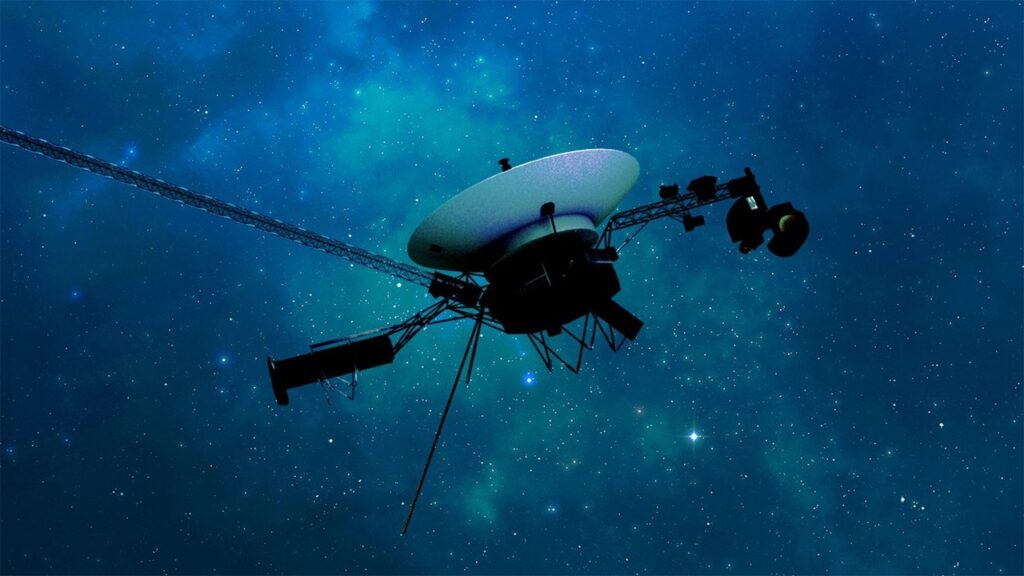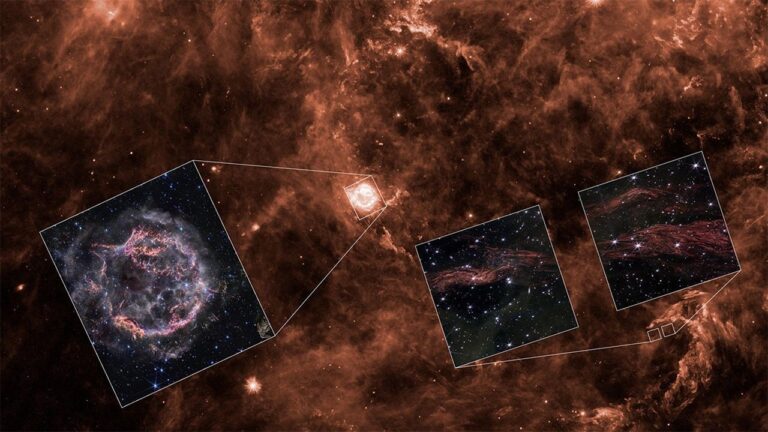NASA has confirmed that after a pause in communications with Voyager 1 in late October, the spacecraft has regained its voice and resumed regular operations.
Voyager unexpectedly turned off its primary radio transmitter, known as its X-band, before turning on its much weaker S-band transmitter in October.
The interstellar spacecraft is currently located about 15.4 billion miles away from Earth and the S-band had not been used in over 40 years.
Communication between NASA and Voyager 1 has been spotty at times and the switch to the lower band prevented the Voyager mission team from downloading science data and information about the spacecraft’s status.
NASA RECONNECTS WITH INTERSTELLAR VOYAGER 1 SPACECRAFT USING TECHNOLOGY NOT USED IN DECADES

NASA’s Voyager 1 spacecraft is depicted in this artist’s concept traveling through interstellar space, or the space between stars, which it entered in 2012. (NASA/JPL-Caltech)
Earlier this month, the team was able to reactivate the X-band transmitter and resume collection of data from the four operating science instruments onboard Voyager 1.
Now that the data can be collected and communications have resumed, engineers are finishing a few remaining tasks to return Voyager 1 back to the state it was in before the issue came up. One task is to reset the system that synchronizes Voyager 1’s three onboard computers.
The S-band was activated by the spacecraft’s fault protection system when engineers activated a heater on Voyager 1. The fault protection system determined the probe did not have enough power and automatically turned off systems that were not necessary to keep the spacecraft flying in order to keep providing power to critical systems.
VOYAGER 1 DETECTS ‘HUM’ WHILE IN INTERSTELLAR SPACE: REPORT

NASA’s Voyager 1 spacecraft, shown in this illustration, has been exploring our solar system since 1977, along with its twin, Voyager 2. (NASA/JPL-Caltech)
But in the process, the probes turned off all nonessential systems except for science instruments, NASA said, turning off the X-band and activating the S-band, which uses less power.
Voyager 1 had not used the S-band to communicate with Earth since 1981.
NASA PUBLISHES NEVER-BEFORE-SEEN PHOTOS OF ‘RAVIOLI’ MOON ORBITING SATURN

This illustration provided by NASA depicts the most distant spacecraft from Earth, Voyager 1. The Jet Propulsion Laboratory in Southern California announced this week that Voyager 1’s four scientific instruments are back in business after a technical problem. (NASA via AP, File)
Voyager 1′s odyssey began in 1977, when the spacecraft and its twin, Voyager 2, were launched on a tour of the gas giant planets of the solar system.
After beaming back dazzling postcard views of Jupiter’s giant red spot and Saturn’s shimmering rings, Voyager 2 hopscotched to Uranus and Neptune. Meanwhile, Voyager 1 used Saturn as a gravitational slingshot to power itself past Pluto.
CLICK HERE TO GET THE FOX NEWS APP
There are 10 science instruments on each spacecraft, and according to NASA, four are currently being used to study the particles, plasma and magnetic fields in interstellar space.
Greg Wehner is a breaking news reporter for Fox News Digital.
Story tips and ideas can be sent to Greg.Wehner@Fox.com and on Twitter @GregWehner.













